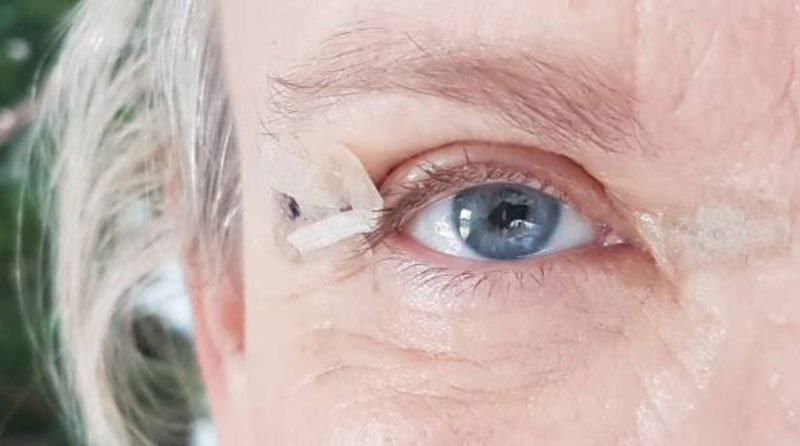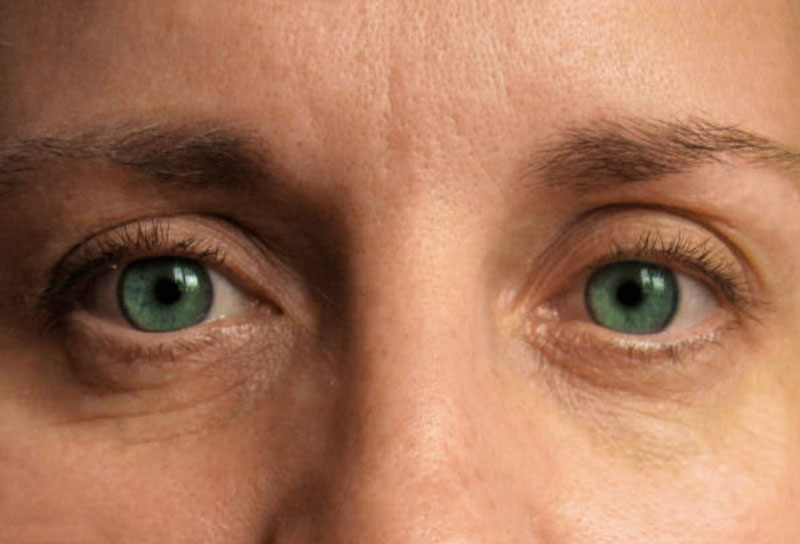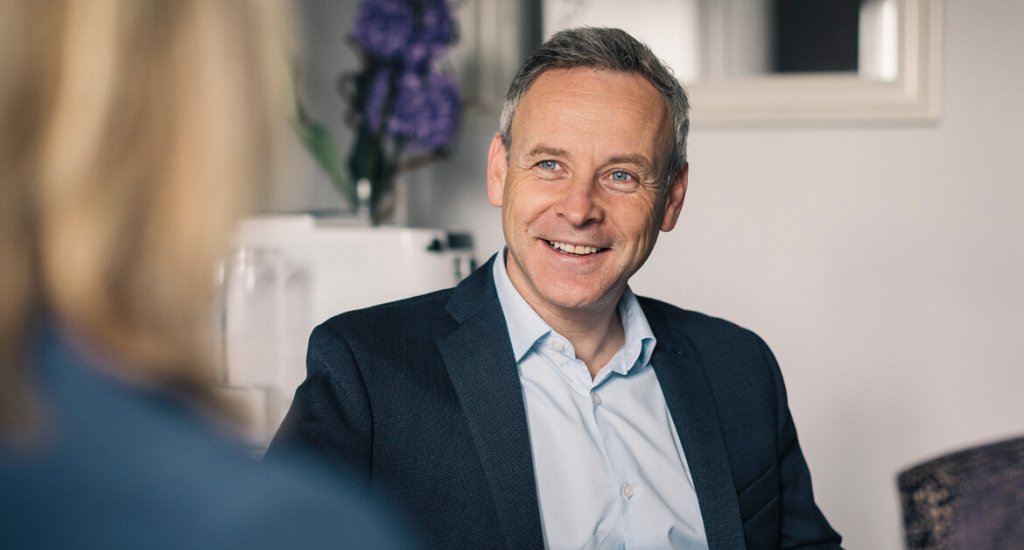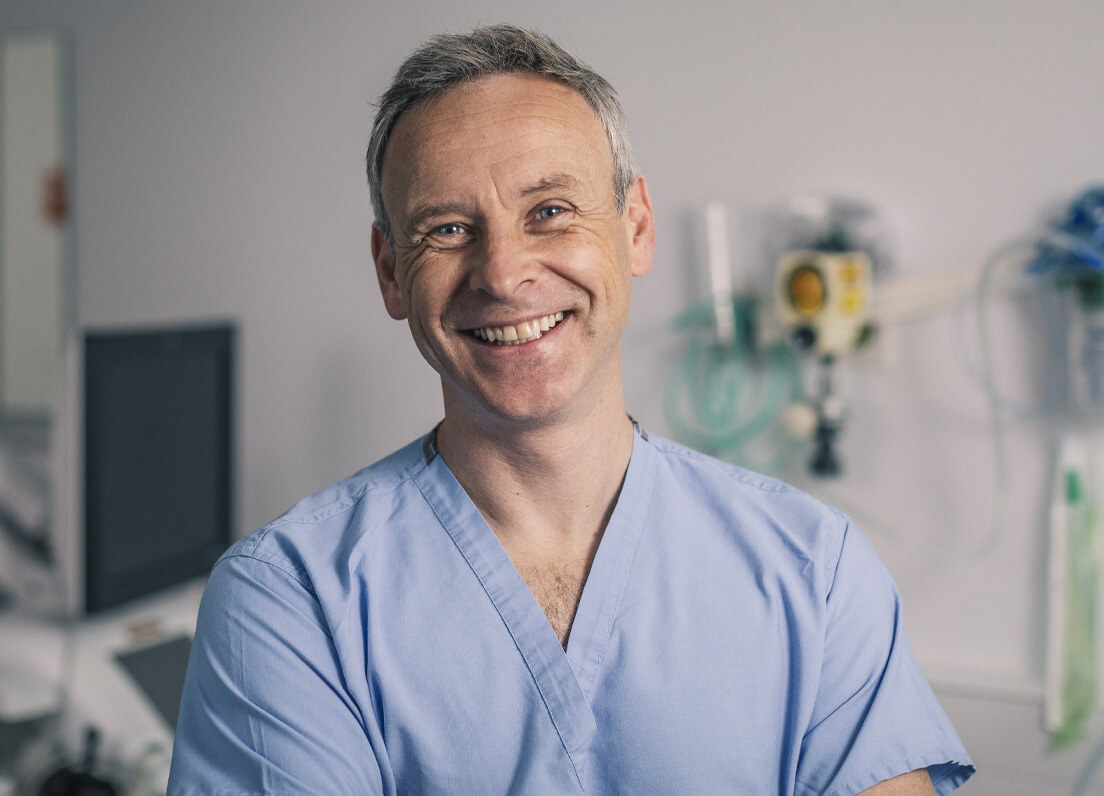Expert Tips for a Comfortable Recovery after Eyelid Surgery
Choosing to have Eyelid surgery, or Blepharoplasty, is a big decision that affects not just how you look, but also how you feel. One of the main things people face after this surgery is dealing with swollen eyelids. It’s a normal part of the healing process, but it can be uncomfortable and a bit worrying if you’re not sure what to expect.
In this blog, Consultant Plastic Surgeon Anthony MacQuillan will walk you through everything you need to know about managing eyelid swelling after your Blepharoplasty surgery. He will cover why swelling happens, how your daily habits can affect it, and give you clear, practical advice for both immediately after surgery and for the weeks following.
Swelling after Blepharoplasty Surgery
After undergoing Blepharoplasty, you should expect to experience swelling as it is a natural reaction for your body to have. This swelling is primarily due to the body’s natural healing process, where fluids and white blood cells rush to the area to start the repair work. The act of making incisions, despite being done delicately in Blepharoplasty, inevitably causes a degree of tissue trauma. Your body’s response to this trauma is to initiate inflammation, leading to swelling. This is a normal part of the healing process and not a cause for undue concern.
Normal Timeline for Swelling
In most cases, the swelling will be most noticeable during the first week following your surgery. You will observe a significant reduction in swelling after the first few days, but it’s normal for some degree of puffiness to persist. Most patients see considerable improvement within two weeks, but it’s important to understand that complete resolution of swelling can take several weeks to months. Each person’s recovery timeline is unique and can be influenced by a variety of factors.
When to Be Concerned
While swelling is a standard part of the recovery process, certain signs warrant a call to your surgeon. If you notice excessive swelling that worsens over time, severe pain not alleviated by prescribed medication, or swelling accompanied by symptoms like fever or abnormal discharge, you should seek medical advice promptly. These could be signs of an infection or other complications that need immediate attention.

Factors That Influence Swelling after Blepharoplasty
Your overall health plays a significant role in how your body responds to surgery and how it recovers. Conditions like diabetes, high blood pressure, or any disorder that affects your body’s healing capability can impact the extent and duration of swelling. It’s essential to manage these conditions effectively and keep Anthony informed about your health status.
Lifestyle Habits
Your habits can also affect your recovery. Smoking, for instance, can significantly prolong the healing process and increase the likelihood of complications. Alcohol consumption can lead to dehydration, affecting the body’s ability to heal. On the other hand, good habits like maintaining a balanced diet rich in vitamins and minerals can support your body’s healing processes.
Environmental Factors
Environmental aspects such as exposure to heat or the sun can exacerbate swelling. It’s advisable to stay in a comfortable, temperate environment during your recovery. High altitudes and air travel shortly after surgery can also impact swelling due to changes in air pressure.
Being aware of the normal timeline of swelling and knowing when to seek medical advice are important. Additionally, factors like individual health, lifestyle choices, and environmental conditions play a significant role in the healing process. By being mindful of these aspects, you can aid your recovery and achieve the best possible outcome from your Blepharoplasty.
Pre-Operative Measures to Reduce Swelling after Blepharoplasty
Optimising your nutritional intake before undergoing Blepharoplasty is a key step in preparing your body for surgery and the subsequent recovery. A well-balanced diet rich in vitamins, minerals, and proteins can significantly bolster your body’s healing capabilities. Foods high in vitamin C, for instance, play an essential role in collagen synthesis, vital for skin healing. Protein-rich foods like lean meats, fish, beans, and tofu provide the building blocks necessary for tissue repair and immune system function.
Including a variety of fruits and vegetables in your diet ensures you’re getting a broad spectrum of nutrients. These foods are also high in antioxidants, which help in reducing oxidative stress that can impede healing. It’s beneficial to start making these dietary changes several weeks before your surgery to maximise their positive impact on your recovery.
Hydration and Its Role in Healing
Staying well-hydrated is another important aspect of pre-operative preparation. Proper hydration aids in maintaining optimal blood volume and circulation, which is important for delivering nutrients to the surgical site and facilitating waste removal. Good hydration also helps in maintaining the elasticity of your skin, which can be beneficial for the healing process. Aim to drink enough water in the days leading up to your surgery.
Avoiding Harmful Substances
Certain substances can adversely affect your body’s ability to heal and should be avoided in the weeks leading up to your Blepharoplasty. Smoking, in particular, impairs circulation and can significantly slow down the healing process. It’s advisable to stop smoking at least several weeks before your surgery. Alcohol should also be limited, as it can lead to dehydration and potentially interact with medications used during and after surgery.
Caffeine intake should be moderated as well since excessive caffeine can lead to dehydration. Additionally, be sure to discuss any medications or supplements you’re taking with Anthony, as some may need to be paused or adjusted prior to surgery.
First 24 Hours after Blepharoplasty Surgery
In the first 24 hours following your Blepharoplasty, applying cold compresses is an effective way to manage swelling and discomfort. Cold compresses help constrict blood vessels, reducing fluid accumulation in the eyelid tissues. It’s important to use cold compresses correctly to avoid any damage to the sensitive skin around your eyes.
Wrap the cold pack in a soft cloth to prevent direct contact with your skin, and apply it gently to the swollen areas. Do this for about 10 to 15 minutes every hour. However, be careful not to apply ice directly to the eyelids, and do not use the cold compresses for extended periods, as this can lead to frostbite or hinder blood flow to the healing tissues.
Head Elevation
Keeping your head elevated is a simple yet effective way to reduce swelling. When you lie flat, fluid tends to accumulate more in the facial area, including around the eyes. To prevent this, use a couple of pillows to prop up your head when you’re resting or sleeping. Aim for an angle of about 30 to 45 degrees. This position helps to promote fluid drainage away from your eyelids, thus reducing swelling.
Pain Management and Its Effect on Swelling
Managing pain effectively after Blepharoplasty is not just about comfort; it also plays a role in controlling swelling. Pain can cause stress and increase blood pressure, both of which can exacerbate swelling. Anthony will likely prescribe pain medication, which should be taken as directed. If you experience significant pain that isn’t alleviated by the prescribed medication, contact your surgeon, as this could indicate a complication.
Avoid over-the-counter medications that can increase bleeding, such as aspirin or ibuprofen, unless approved by your surgeon. Instead, paracetamol is often recommended as it’s gentler on your system but effective for pain relief.
Follow-up Care after Blepharoplasty
Follow-up appointments are an integral part of your recovery process. These appointments allow Anthony to monitor your healing progress, address any concerns you may have, and ensure that you are recovering as expected. During these visits, your surgeon can also advise when you can resume normal activities and provide additional care instructions. It’s essential to attend all scheduled appointments, even if you feel that you are healing well.
Long-Term Recovery Strategies after Blepharoplasty
As you progress through your recovery from Blepharoplasty, maintaining a nutritious diet and staying hydrated continue to play an important role. But there are other strategies to adopt to ensure a smooth recovery:
Sleep Patterns
Quality sleep is a cornerstone of good health and recovery. During sleep, your body undergoes most of its healing and regeneration processes. Aim for 7-9 hours of uninterrupted sleep each night. Maintain a regular sleep schedule, and create a restful environment in your bedroom, free from distractions like electronic devices.
If you’re experiencing discomfort while sleeping, continue using pillows to keep your head elevated. This position not only aids in reducing residual swelling but also helps in preventing unnecessary pressure on your healing eyelids.
Avoiding Strenuous Activities
While staying active is important for overall health, it’s essential to avoid strenuous activities that could strain your body or increase blood pressure during the recovery phase. Activities such as heavy lifting, vigorous exercise, or bending over can lead to increased swelling or even bleeding in the operated area. Discuss with Anthony about when it’s safe to resume different types of physical activities. Usually, light walking is encouraged early in the recovery process to promote circulation, but more intense activities should be reintroduced gradually, based on your healing progress and your surgeon’s advice.
Monitoring and Managing Complications
Being vigilant about signs of infection or other complications is important for your long-term recovery. Symptoms to watch out for include:
- Increased redness or swelling around the eyes
- Persistent pain or discomfort that doesn’t improve with medication
- Unusual discharge or bleeding from the incision sites
- Fever or general feelings of unwellness
If you notice any of these symptoms, contact Anthony’s team immediately. Early detection and treatment of complications can prevent them from becoming more serious.

FAQs about How to Reduce Eyelid Swelling after Blepharoplasty
How long should I use cold compresses for optimal effect?
- Using cold compresses is most effective in the first 48-72 hours after surgery. During this period, it’s recommended to apply them intermittently – for about 10-15 minutes every hour while you’re awake. After the initial 72-hour period, their benefit in reducing swelling diminishes, and you should follow Anthony’s specific advice regarding further use.
Can I use herbal remedies or supplements to reduce swelling?
- While some herbal remedies and supplements are known for their anti-inflammatory properties, it’s crucial to consult with Anthony before using any. Certain supplements can actually increase the risk of bleeding or interact with other medications you’re taking. Always get a green light from your surgeon before adding any new supplement or herbal remedy to your routine.
Is it normal for one eyelid to swell more than the other?
- Yes, it’s not uncommon for one eyelid to swell more than the other after Blepharoplasty. Each side of your face may heal differently due to variations in tissue structure and individual healing response. However, if the difference is significant or accompanied by severe pain or discharge, you should contact your surgeon to rule out any complications.
How can I tell if my swelling is a sign of infection?
- Swelling accompanied by symptoms like increased redness, warmth, yellow or green discharge, severe pain, or a fever could indicate an infection. If you notice any of these signs, contact your surgeon’s team immediately for an assessment and appropriate treatment.
Will wearing glasses or contact lenses affect my eyelid swelling?
- After Blepharoplasty, it’s generally advised to avoid wearing contact lenses for a period as they can irritate the eyes and potentially affect healing. Glasses can be worn, but you should be cautious if the frames press against the surgical area. Discuss with Anthony the appropriate time to resume wearing contact lenses and any precautions you should take when wearing glasses during the initial recovery phase.
Further Reading about Face Procedures with Consultant Plastic Surgeon Anthony MacQuillan
- Read more about How to Reduce Bruising and Swelling after Facelift
- Read more about Recovery after Blepharoplasty
- Read more about Procedures to Have with a Facelift
- Read more about Hooded Eyelids
- Read more about How to Remove Stitches after Blepharoplasty
Medical References about Blepharoplasty
- Upper Eyelid Blepharoplasty: Evaluation, Treatment, and Complication Minimization – PubMed
- Eye Lift: Blepharoplasty (Eyelid Surgery) Information – WebMD
- Eye Bag Surgery: Procedure, Alternatives, Cost, Recovery – Medical News Today
- Complications of Blepharoplasty: Prevention and Management – NCBI
- Management of Cosmetic Eyelid Surgery Complications – NCBI



